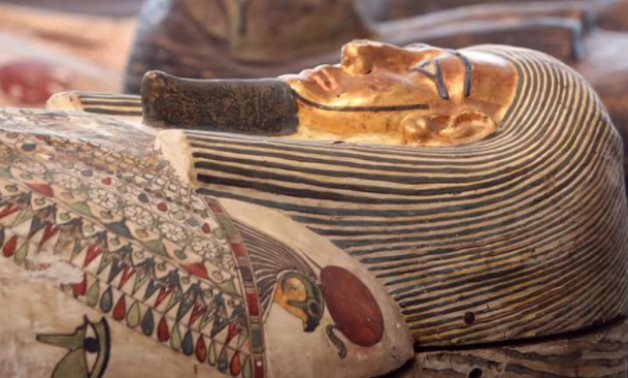
One of the delicately colored coffins unearthed recently in Saqqara Necropolis - photo via Egypt's Min. of Tourism & Antiquities
CAIRO – 16 November 2020: Egypt’s Ministry of Tourism and Antiquities continues excavation work through various archaeological missions, whether Egyptian or foreign.
However, what was noticed during the past four years is a remarkable distinction for the Egyptian missions working in the various archaeological areas.
The last thing that was announced by Egyptian archaeologists and restorers was the discoveries of Saqqara sarcophagi, which so far have reached 159 coffins and a large number of remarkable statues exceeding 40 statues.

But the question is, are there still opportunities to extract other coffins from the wells of Saqqara?
The Saqqara Archaeological Area is a very large area with about 13 pyramids. It was the burial area for kings of the Old Kingdom.

Also, the area was used to bury citizens and senior officials from the beginning of the Dynasties through all the eras of ancient Egyptian history: Pharaonic, Greek and Roman. It also has a number of ancient monasteries and the largest animal cemetery.
This is what Egypt’s Minister of Tourism & Antiquities Khaled el-Enany said during the announcement of the latest discovery in Saqqara, adding that Saqqara is a very wealthy region that is still full of treasures that will be revealed to the world.

With continuing excavations in Saqqara, it is expected to unearth human and animal graves in any of its parts.
As for whether there are coffins still buried in the wells of Saqqara, Enany said Saqqara still has a lot to offer and after the announcement of the coffins on October and recently, work will still be underway in the archaeological area to see what other treasures the area has to offer.
Some people wondered why isn’t the full discovery achieved before being announced to the public.
Enany answered that question in a simple manner: “There was a need to extract the coffins that were discovered to provide space to complete the exploration of the new wells behind them.”
Comments
Leave a Comment